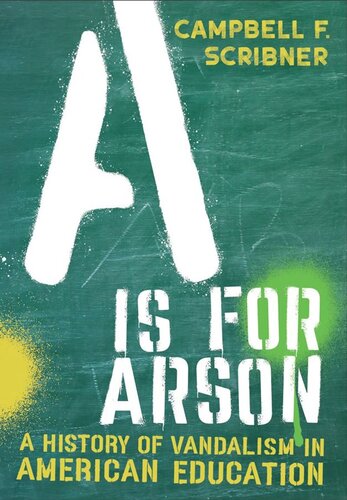

Most ebook files are in PDF format, so you can easily read them using various software such as Foxit Reader or directly on the Google Chrome browser.
Some ebook files are released by publishers in other formats such as .awz, .mobi, .epub, .fb2, etc. You may need to install specific software to read these formats on mobile/PC, such as Calibre.
Please read the tutorial at this link: https://ebookbell.com/faq
We offer FREE conversion to the popular formats you request; however, this may take some time. Therefore, right after payment, please email us, and we will try to provide the service as quickly as possible.
For some exceptional file formats or broken links (if any), please refrain from opening any disputes. Instead, email us first, and we will try to assist within a maximum of 6 hours.
EbookBell Team

4.4
62 reviewsIn A is for Arson, Campbell F. Scribner sifts through two centuries of debris to uncover the conditions that have prompted school vandalism and to explain why attempts at prevention have inevitably failed. Vandalism costs taxpayers hundreds of millions of dollars every year, as students, parents, and even teachers wreak havoc on school buildings. Why do they do it? Can anything stop them? Who should pay for the damage? Underlying these questions are longstanding tensions between freedom and authority, and between wantonness and reason.
Property destruction is not simply a moral failing, to be addressed with harsher punishments; nor can the problem be solved through more restrictive architecture or policing. Scribner argues that education itself is a source of intractable struggle, and that vandalism is often the result of an unruly humanity. To understand schooling in the United States, one must first confront the all-too-human emotions that have led to fires, broken windows, and graffiti.
A is for Arson captures those emotions through new historical evidence and diverse theoretical perspectives, helping readers understand vandalism variously as a form of political conflict, as self-education, and as sheer chaos. By analyzing physical artifacts as well as archival sources, Scribner offers new perspectives on children's misbehavior and adults' reactions, and allows readers to see the complexities of education—the built environment of teaching and learning, evolving approaches to youth psychology and student discipline—through the eyes of its often resistant subjects.